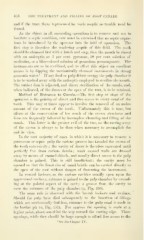Page 460 - My FlipBook
P. 460
458 THE TREATMENT AND FILLING OF ROOT CANALS.
and if the tract there represented be made aseptic no trouble need be
feared.
As the object in all succeeding operations is to remove and not to
institute a septic condition, care must be exercised that no septic organ-
isms be introduced by the operator into the field of operation. The
first step is therefore the rendering aseptic of this field. The teeth
should be cleansed first with a brush and soap, then the mouth be rinsed
with an antiseptic, as 3 per cent, pyrozone, 10 per cent, solution of
nieditrina, or a lilac-colored solution of potassium permanganate. The
instruments are to be sterilized, and to effect this object an excellent
means is by dipping the mechanically cleansed instruments in strong
ammonia water.^ If any food or pulp debris occupy the pulp chamber it
is to be washed away with the antiseptic employed to sterilize the mouth.
The rubber dam is adjusted, and direct sterilization of the canals, and,
when indicated, of the tissues at the apex of the root, is to be attained.
Method of Entrance to Canals.—The first step or stage of the
operation is the gaining of direct and free access to every canal of the
tooth. This may at times appear to involve the removal of an undue
amount of the crown of the tooth. Unfortunately this is true, but
efforts at the conservation of too much of the crown structures and
form are frequently followed by incomplete cleansing and filling of the
canals. This latter is the greater evil of the two, so the cutting away
of the crown is always to be done when necessary to accomplish the
end in view.
In the vast majority of cases in which it is necessary to remove a
putrescent or septic pulp the carious process has invaded the crown of
the tooth extensively ; the cavity of decay is therefore excavated until
perfectly free from carious dentin ; weak enamel walls are dressed
away by means of enamel chisels, and usually direct access to the pulp
chamber is gained. This is still insufficient ; the cavity must be
opened so that the finest size of canal bristle can be carried directly to
the apex of the root without danger of fracturing the instrument.
In central incisors, as the carious cavities usually open upon the
approximal surfaces, entrance is gained to the pulp chamber by extend-
ing at the palatal aspect of the cavity a groove from the cavity to
over the entrance of the pulp chamber (a, Fig, 450).
The same rule is observed with the lateral incisors and canines.
Should the pulp have died subsequently to the insertion of fillings
which are mechanically faultless, entrance to the pulp canal is made in
the basilar pit (b, Fig. 451). For canines the opening is made at a
higher point, about one-third the way toward the cutting edge. These
openings, while they should be large enough to afibrd free access to the
' See also Cha[)ter IV.


